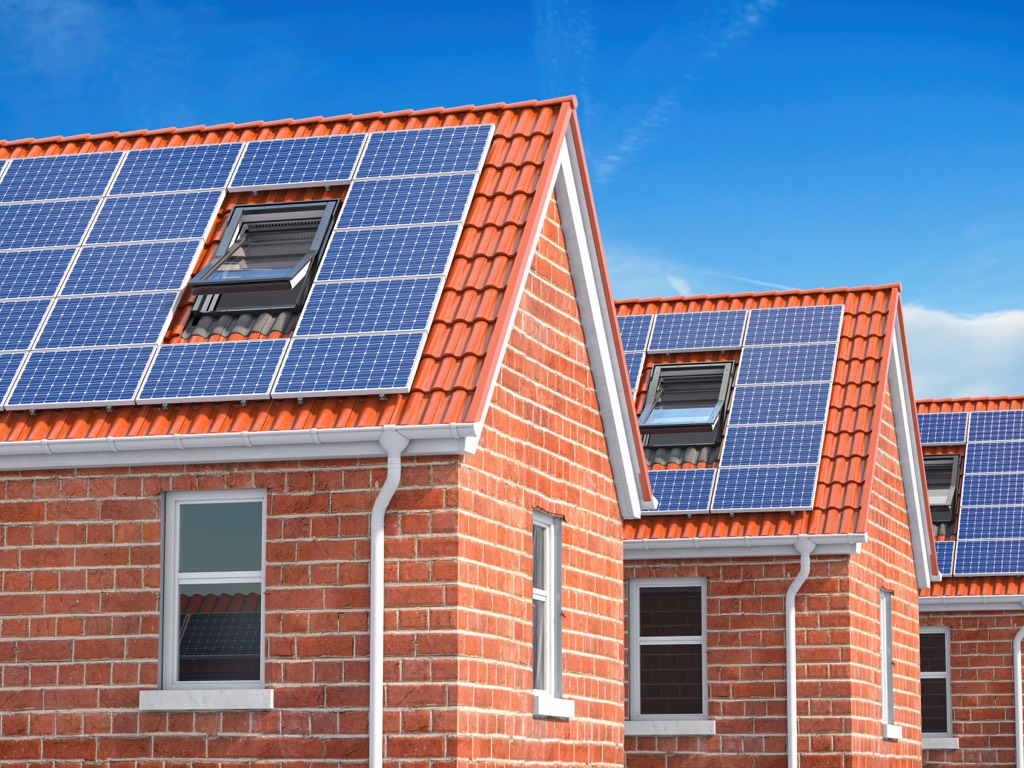Solar assisted heat pump (SAHP) are one innovation at the cutting edge of sustainable home heating. This hybrid system combines two powerful technologies – solar thermal or photovoltaic energy and air source heat pumps to provide an eco-friendly and cost effective solution for heating your home.
What is a Solar Assisted Heat Pump?
Basically it’s a traditional air source heat pump. But rather than using electricity from the grid it uses electricity generated by a solar panel to work. There are typically two types:
1) Solar Thermal Assisted Heat Pumps. These use solar thermal collectors to preheat a fluid. This reduces the workload on the pump and makes it much more efficient overall.
2) Solar Photovoltaic (PV) Assisted Heat Pumps. In this system, the solar panel generates electricity which is then used to run the heat pump.
How does a Solar Assisted Heat Pump work?
The two versions work in different ways.
In a Solar Thermal Assisted Heat Pump the solar collector captures sunlight and heats a fluid (usually a glycol mix). The heat pump then uses this fluid and heats it further – up to the level needed for domestic heating and hot water. Because the temperature of the fluid is already heated by the solar collector it reduces the amount of energy needed to heat it to the required temperature. In turn this uses less input energy.
In a PV assisted system, solar panels generate electricity which a heat pump uses in the normal way. On a sunny day the system can operate almost entirely with energy from the sun, reducing your energy costs considerably.
What are the benefits of a Solar Assisted Heat Pump?
Lower energy bills
It might be obvious, but if you’re using less electricity to power your heat pump, your monthly bills with be lower. However, you should also take into account that during the winter, when your heat pump will be at its busiest, you are likely to have a lot less sun – especially in the UK.
Reduced carbon footprint
As well as saving money, you’ll also be saving carbon. You’ll be using less energy from the grid (which uses a mixture of energy types to power itself) and more renewable energy from the sun.
What are the disadvantages?
Higher installation costs
You are looking a higher installation cost whichever system you pick.
For a solar assisted heat pump, the system is more expensive generally and is a bit more fiddly to install, driving up the cost.
For a PV assisted system, you’ll probably be looking at a domestic solar panel installation on your roof. While these systems can save you a lot of money generally on your electricity bills, they do require a substantial capital investment.. This typically takes between 6-10 years to pay back.
You’ll need more space
You will need more space generally for a solar assisted heat pump. For a PV assisted system you’ll somewhere to put your solar panels (normally a roof). For a solar assisted heat pump, you won’t need a roof solar installation, but the outside units are a little bit bigger.
How much money could I save?
This is a tricky one to answer. But let’s look at Solar Assisted Heat Pumps first.
A solar assisted heat pump can use between 30%-60% less energy than a normal heat pump. This will obviously depend on several factors – such as the heat pump model, the time of year and the amount of sun available. If we assume that over the course of the year it will save 50% then it’s a fairly easy calculation to make.
We have gone into a lot of detail in how much a heat pump actually costs to run in another article. In short, we estimate that a 145m2 well-insulated new build home might cost about £1,000 to run while a leaky Victorian home of the same size might cost £2,400. For this article, and for the sake of simplicity we can take the Energy Saving’s Trust figure of £1,540 per year as an average.
Applying simple maths we could estimate that using a solar assisted heat pump might save you £770 per year (50% of £1,540).
If you’re planning on using a PV assisted heat pump it’s a slightly different calculation. Again this will depend on a number of factors, particularly how big your solar installation is and how much sun you have in your area. The Energy Savings Trust estimates that you could save around £495-£750 per year based on a 3.5kWp rooftop system which is the most common size in the UK. This is obviously for all the electricity used in your home, of which your heat pump is just one item.
What sort of properties would suit a solar assisted heat pump?
Solar assisted heat pumps are particularly suit new builds which meet modern building standards in terms of energy efficiency. They might also work well if you are doing a complete renovation of an older house, including thermo upgrades to your walls, windows and doors. They may also suit you if you have an off grid property where you are looking to reduce your dependence on electricity suppliers. We would not generally recommend a solar assisted heat pump for an older property where you are making limited insulation upgrades. In this instance you are probably better off going for a high temperature heat pump.

